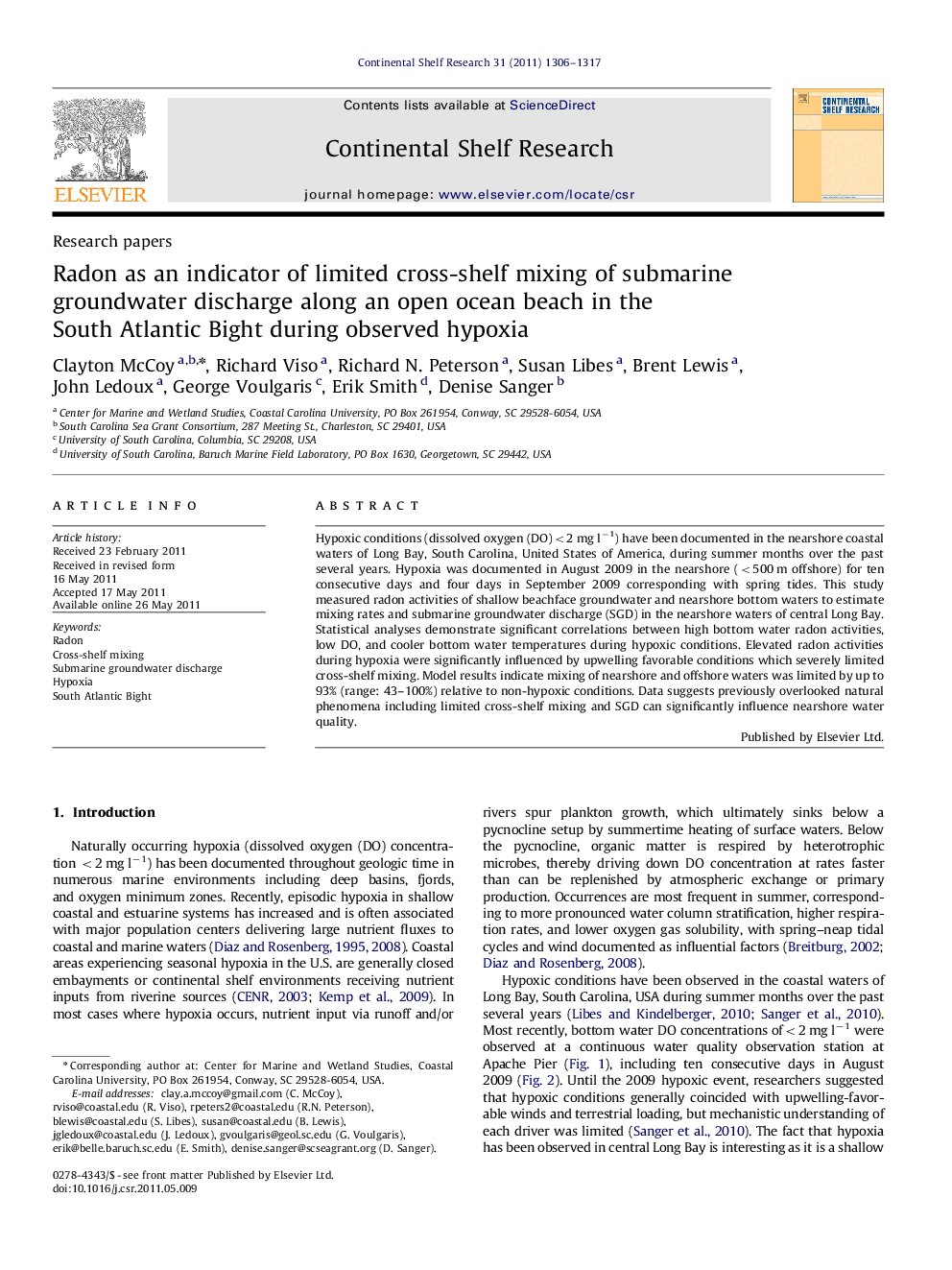| Article ID | Journal | Published Year | Pages | File Type |
|---|---|---|---|---|
| 4532591 | Continental Shelf Research | 2011 | 12 Pages |
Hypoxic conditions (dissolved oxygen (DO)<2 mg l−1) have been documented in the nearshore coastal waters of Long Bay, South Carolina, United States of America, during summer months over the past several years. Hypoxia was documented in August 2009 in the nearshore (<500 m offshore) for ten consecutive days and four days in September 2009 corresponding with spring tides. This study measured radon activities of shallow beachface groundwater and nearshore bottom waters to estimate mixing rates and submarine groundwater discharge (SGD) in the nearshore waters of central Long Bay. Statistical analyses demonstrate significant correlations between high bottom water radon activities, low DO, and cooler bottom water temperatures during hypoxic conditions. Elevated radon activities during hypoxia were significantly influenced by upwelling favorable conditions which severely limited cross-shelf mixing. Model results indicate mixing of nearshore and offshore waters was limited by up to 93% (range: 43–100%) relative to non-hypoxic conditions. Data suggests previously overlooked natural phenomena including limited cross-shelf mixing and SGD can significantly influence nearshore water quality.
► Elevated radon activities were observed during hypoxic conditions in Long Bay, SC. ► Correlations were documented between radon activities, DO and water temperature. ► Elevated radon activities were primarily a result of limited cross-shelf mixing. ► Model results indicate cross-shelf mixing was inhibited by up to 93%. ► SGD and limited mixing can significantly impact nearshore water quality.
